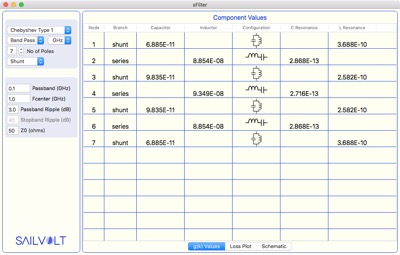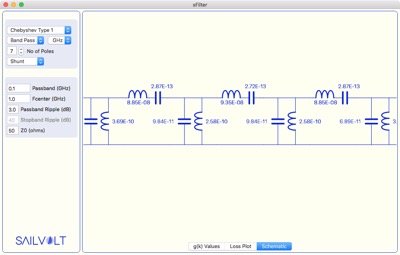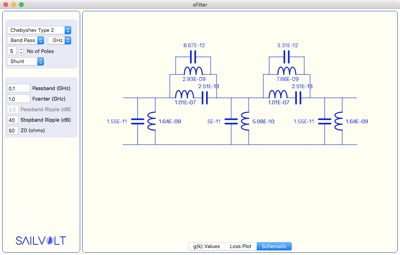sFilter is a design aid for quickly developing electrical filters. It supports Butterworth, Bessel, and Chebyshev Type 1 and Type 2 filters in lowpass, highpass, bandpass, and bandstop configurations with up to eleven branches.
sFilter opens to a table of gk values which represents the filter component values for the filter design constraints described by the user design choices shown at the left. As the user updates the design constraints by selecting the frequency range or filter type or number of branches, the table updates automatically.
The gk table shows the branch number, whether the branch is in series or shunt to ground, and then the capacitive and inductive values. A small icon of the branch configuration is shown. The capacitor and inductor's represent single branches for lowpass and highness filters. For bandpass and bandstop filters, each branch is represented by the main component value and the resonant element which moves the lowpass prototype value to the center frequency of the filter. For lowpass or highpass filters, the center frequency is greyed out since it is meaningless for these filter configurations. In general, the filter configuration controls may change according to the type of filter or some aspect of its configuration.
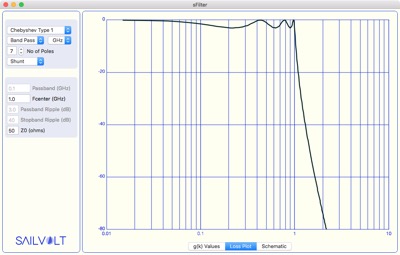
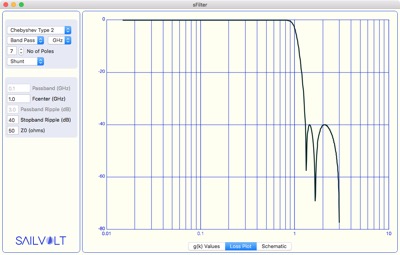
The sFilter graphic on the right illustrates a Chebyshev Type 1 seven branch bandpass schematic with 3dB of passband ripple. The passband is 100MHz in bandwidth with a center frequency of 1GHz. Seven poles are too large to display on the schematic page, so the page allows scrolling in both dimensions.
The sFilter schematic on the right illustrates a five branch Chebyshev Type 2 filter. As you can see, the shunt components look like a normal bandpass filter whereas the series components are resonated against stopband zeros. It is this additional resonances which give the stopband ripple as shown above.
sFilter is available on the Apple App store at sFilter.
